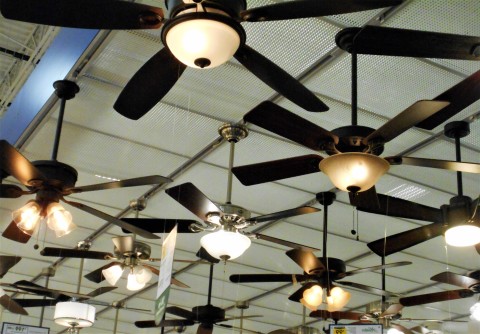Which Way Should My Fan Spin?
Did you know your ceiling fan can actually change directions?
That's right, not only can you change the spinning direction of your fan, but doing so can actually impact how hot or cold air moves in each room in your home. Finding ways to reduce the strain on your heating and air conditioning system can not only let it work less hard to do the job, but it can elongate the lifespan of your system too, and one of the best ways to let your ceiling fan do some of the work.
When to Use Downdraft
Cooling off in the summer can really drive your energy bill through the roof, and with this summer being one of Georgia's hottest, finding ways to reduce costs and stay cool is important to being comfortable in your own home.
Somewhere on your ceiling fan, you will have a reverse switch, so after turning your fan off and waiting for it to stop, check your switch to ensure that your fan is turning counterclockwise. Setting your fan to turn counterclockwise will push the cold air in the room down, assisting any air vents you may have high on the walls or on the ceiling.
Some more modern ceiling fans may have reversing controls on a remote control, or if your home has smart connections, you may be able to do this within an app on your smartphone.
When to Use Updraft
Finding ways to cut your energy costs are just as helpful in the winter and switching over your fan's direction when temperatures drop is a great way to ease the strain on your furnace. Turn your fan back to clockwise in the wintertime; this takes the hot air at the top of the room and pushes it back down the walls to keep you warm. Since hot air rises, sometimes all your room's heat can get stuck at the top, which may need the help of a ceiling fan to be pushed back down.
Making sure you let your ceiling fan create updraft is especially important if your home has high or vaulted ceilings. If you're having trouble finding the reverse switch, manufacturers sometimes hide exterior components and controls underneath a large bulb component on your ceiling fan.
How We Can Help
If you're having ceiling fan problems, or if you have interest in upgrading to a fan with smartphone connectivity, it's important to get in contact with a licensed electrician who is prepared to handle installation and repairs.
Other common problems people face when running a ceiling fan in the summer is noticing an unsteady fan wobble back and forth when turned on. H&H Electric has professionals at the ready to make sure your ceiling fan is not only working properly, but also mounted to a fan-rated box that is up to code.
If you're looking for more ways to make your home energy efficient, doing so with the guidance of a licensed electrician is key. Contact H&H Electric and Security today for help with your ceiling fan, or for more ways to make your home more energy efficient.

